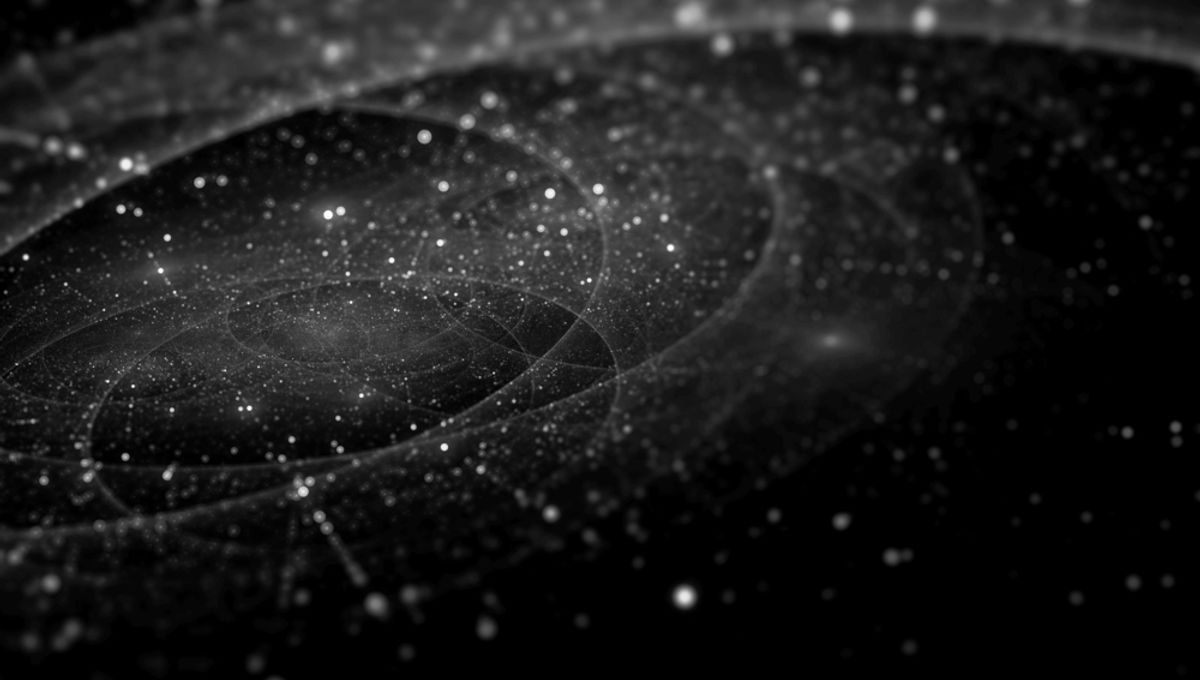
A reanalysis of thousands of experiments in particle accelerators worldwide has found evidence for an unknown particle, one that does not fit in the Standard Model of particle physics. If confirmed, that alone would be an immense discovery, but the physicists involved go further. They suspect what they have found are “dark photons”, particles that interact with dark matter but can also couple weakly with ordinary, familiar matter.
Sometimes it seems like physicists are watching entirely too much sci-fi for their own good. Dark photons sound like something used to make the Darksaber from the Star Wars Universe, a possibility not entirely dispelled when a project to seek them was called Positron Annihilation into Dark Matter Experiment (PADME).
Cutesy acronyms aside, however, there are plenty of reasons to suspect the particles physicists call dark photons exist and represent the key to understanding dark matter. Photons are the carriers of the electromagnetic force, and gluons, W, Z, and Higgs bosons carry the other three known forces. The theory behind dark photons is that they are the carriers of a fifth, still unconfirmed, force that interacts with dark matter.
Professor Anthony Thomas of the University of Adelaide admitted to IFLScience the name is a little misleading. “It started out when they were first pursued in the 1980s and it was thought these particles were very like photons. Over time the idea has been generalized,” Thomas said. It is now thought the particles, still referred to as dark photons, have a lot of mass, making them quite unlike photons at all, but the name has stuck.
Thomas, his student Nicholas Hunt-Smith, and co-authors used the results from experiments where electrons, muons, and occasionally other particles were smashed into protons so hard the targets broke down into their constituent quarks. The process is known as deep inelastic scattering. The observations afterward are more consistent with the presence of an unknown particle with a mass two to 10 times that of protons, than they are with only known particles, the team concludes.
Dark photons are far from the only particles outside the Standard Model that have been proposed by physicists seeking to explain anomalies in the universe in recent decades. However, Thomas said in a statement: “The existence of dark matter has been firmly established from its gravitational interactions, yet its precise nature continues to elude us despite the best efforts of physicists around the world.”
Perhaps drawing inspiration from a different fictional universe, Thomas added: “The key to understanding this mystery could lie with the dark photon, a theoretical massive particle that may serve as a portal between the dark sector of particles and regular matter.” If his team has indeed found a new particle, Thomas thinks it fits the bill to be a dark photon.
Further investigation is required to confirm what they are seeing is not a “higher order effect” consistent with the Standard Model, Thomas told IFLScience. If alternatives can be ruled out, the quest will begin to design an experiment that provides more direct evidence for dark photons and reveals their nature.
Thomas told IFLScience he is “not an experimentalist” and doesn’t know what those experiments would be. “Hopefully some of my colleagues can come up with something.” Previous direct searches have used colliders that, Thomas says, are an order of magnitude lower in energy than what his team think they have found.
Finally, if all this succeeds, Thomas told IFLScience: “If we are lucky [the particles] will couple with dark matter” and can be used to trace its presence, revealing its nature after all this time.”
The study is published in the Journal of High Energy Physics.
Source Link: Signs Of Dark Photons Could Illuminate Search For Dark Matter